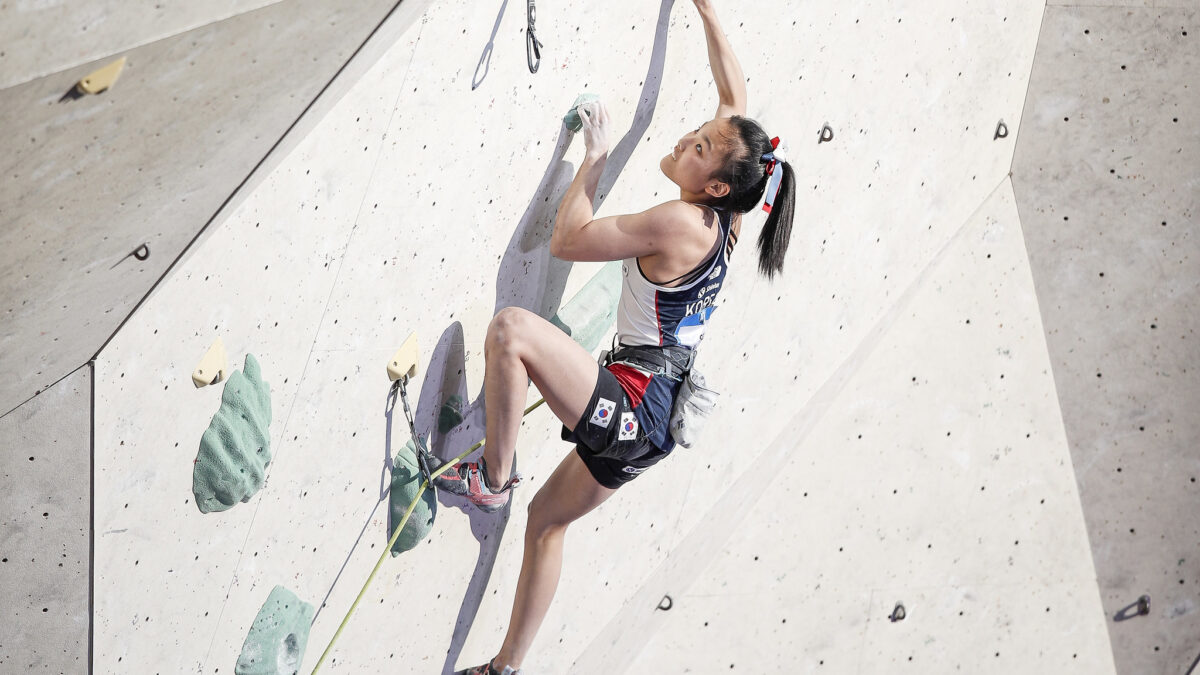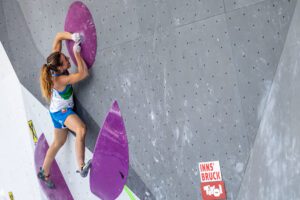What is Good Separation in the World Cups?
Separation is hot topic amongst setters, fans, and athletes. Producing a "good" result is difficult to qualify

Separation almost always occurs. Regardless of how the rounds go, the game ensures all who participate will fall within an order. But what makes for good separation on the World Cup Circuit?

Boulder Separation
In Boulder World Cups, separation is a function of several factors in descending levels of priority. The following list describes these factors:
- (1) Tops: The climber with the most Tops wins.
- (2) Zones: If tied for Tops, the climber with the most Zones wins.
- (3) Attempts to Top: If tied for Tops and Zones, the climber with the fewest attempts to Tops wins.
- (4) Attempts to Zone: If tied for Tops, Zones, and Attempts to Top, then the climber with the fewest attempts to Zones wins.
- (5) Countbacks: If all things are equal between two climbers, then the climber who qualified better in the previous round will finish higher in the ranking.
- (6) Tops attained on first attempt: If countbacks cannot separate the athletes, then the number of Tops per athletes’ first attempts will be compared. This process will continue to the second attempt and so on. As such, if two climbers climb four boulders with 8 attempts, but one flashed two of the problems, while the other took two attempts on each of the four boulders, and total attempts to Zone matched, then the climber who flashed two boulders would rank higher.
- (7) Zones attained on the first attempt: When (6) fails to create separation, the same process will be applied to Zones.
- (8) Considered Equal: If two athletes earn the same result, and cannot be separated after the above steps, their scores will be considered equal. For example, two athletes that flash all boulders in all three rounds will both earn gold medals.

Lead Separation
By comparison, Lead World Cups are much more challenging to separate. The controlled number of attempts in the on-sight format makes it difficult to avoid the time-based separation present in the first World Cup of the season. The following list describes these factors in descending order of priority:
- (1) Tops: The climber(s) who Tops wins or is ranked highest
- (2) Highpoint: If there are not Tops, the athlete who reaches highest scoring hold wins
- (3) Countbacks: If ties occur in the semi-final or final round, then the ranking will be resolved by countbacks.
- (4) Climbing time: If countbacks fail to separate the athletes in first, second, or third, then these places shall be determined by climbing time. The lower the time the better.
Can Bad Separation Exist?
In a way, there is no such thing as bad separation. Due to the fact that separation is inevitable in all but the most extreme of bouldering circumstances, so long as it occurs the route setters have done their job. It would seem that bad separation, then, could only exist in Boulder if two or more athletes walked away with the same medal, as per (8).
With that said, if we qualify the relative success of route setting in Boulder as literally any separation, then this is easily achieved. If we can presume route setters hold themselves to a higher standard, a thought reflected in the supposed anxiety expressed by World Cup setters when it seems there will be scores too closely reflecting one another, then how do we qualify good separation?

Good Separation in Bouldering
Distinct victories seem like an obvious place to start. Realistically, the best set competition will move very little down the line of proposed methodologies for separation. In both Boulder and Lead, the setting would be qualified as perfect if only one athlete secured the maximal number of Tops for the round.
This statement is somewhat reductive, as routesetters are more than separation creators. Instead, they also try and set a show for the audience. As such, many would not feel that a Boulder World Cup was perfectly set if only one person Topped only one Boulder.
This detail complicates the setter’s job. Otherwise, they could theoretically set further spaced crimps on the same angle across four problems and simply find out who is the strongest in that style. Though separated, this would not make for a very successful bouldering competition. If we can presume that one Top of four boulders across all athletes would be the worst example of perfect separation, then perhaps we can assume the opposite to be the best example: one athlete securing four Tops in a field where all other athletes separate by Tops and Zones.
Following the above ideal scenario, discussion becomes subjective. As setters specifically use drop-ability as a method for separating athletes, attempts seem like a valid form of separation. With that said, number of ascents per attempt, as found in (6) follows countbacks, and seems less than ideal. Countbacks likely equal bad separation, as two athletes effectively finished with the same score. The rules that follow countbacks aim to force separation as opposed to presenting the athletes’ relative abilities.

Good Separation in Lead
The question of whether time-to-highpoint in a tied competition represents good separation in Lead is difficult. In some ways, it’s a part of the competition. Critiquing it is like critiquing the Sport Climbing Combined Olympic structure: if you don’t like the rules, don’t play the game.
With that said, Lead, also known as Difficulty, is a competition of strength and endurance with a time limiter. If athletes are scoring the same, the actual test of the competition becomes one of Speed instead of Lead. This point is made more poignant when ties occur at the Top of a Lead route but is practically equal to ties occurring lower down on the route as well.
Perhaps the reason that separation by time is less-than-ideal is that it does not present the purpose of the setting’s associated scoring. Instead, you could build a less complex route, with relatively little thought and still achieve separation.
As such, perhaps highpoint describes good separation in Lead. As with Boulder, an ideal would see only one climber reach the highest point on the wall. It would see subsequent climbers without ties ranking lower on the wall.
Still, Lead separation is different from bouldering. Lead’s time component, the hard-six-minute format, already exists as one way to kick athletes off the wall. It seems difficult to argue that time-to-highpoint is a bad form of separation. After all, the competition already asks climbers to move within time limits.
Featured image of Chaehyun Seo earning silver by time by Dimitris Tosidis.


